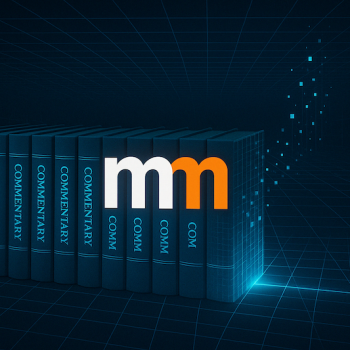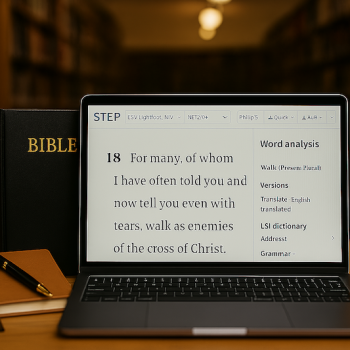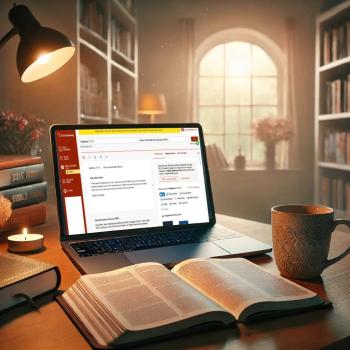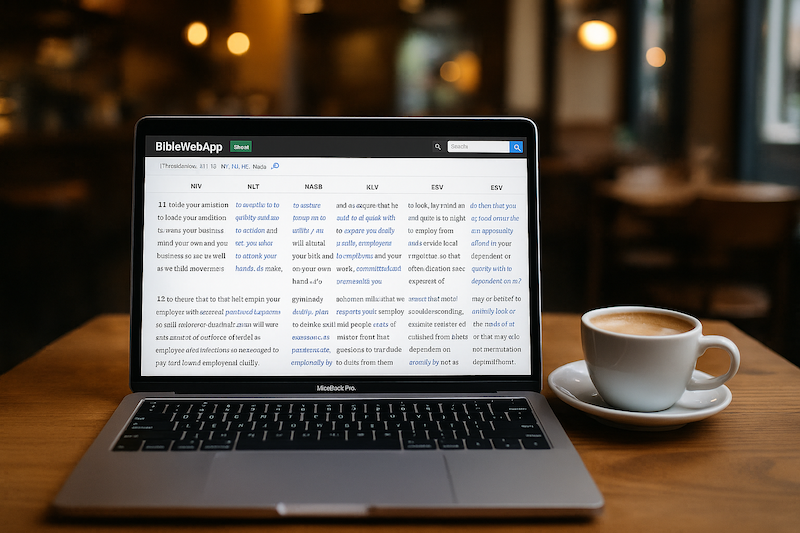
Through each post in the Bible Study Essentials blog series, I’ve been highlighting digital tools that have helped me as a student, pastor, Bible nerd, and follower of Jesus. Along the way, these accessible, effective, and often free tools have deepened my engagement with Scripture and become trusted companions in my study, sermon preparation, and spiritual formation.
The Lead a Quiet Life blog explores what it means to lead a quieter life at a slower pace—to discover a simple life and faith that embraces downward mobility in a chaotic world and a church often obsessed with excess. Rooting ourselves in the study of Scripture is essential to this pursuit, and these digital tools have been invaluable to me as I seek a quieter, more intentional life of faith—one marked by stillness and the deep knowing that God is God. It’s my hope that along the way, you’ll discover resources that help you study and grow as a follower of Jesus, too.
This week, I want to introduce you to a lesser-known but incredibly practical resource: the Bible Study App, available at biblewebapp.com.
The Bible Study App
This free, ad-free online platform is a simple yet surprisingly robust tool created by the Digital Bible Society, with major contributions from John Dyer and Michael Johnson. Unlike platforms like Logos or Bible Gateway Plus—which I’ve used longer—this app stands out for its intuitive layout, clarity, and ease of use when comparing multiple Bible versions side by side. I do not think there is a cleaner interface out there for Bible Study. I currently keep usually about five versions open as my default view: the NET, ESV, KJV, NIV, and NASB. The app makes switching between and comparing translations effortless, and that’s where it shines most. It won’t revolutionize academic study, but it’s ideal for quick access to Scripture and parallel reading without distraction.
In English, readers can access a wide range of translations including the ASV, AMP, ESV, KJV, NASB, NET, NIV, WEB, and YLT. For Greek texts, options include Westcott & Hort, Tischendorf’s 8th Edition, the Septuagint (CATSS), and the SBL Greek New Testament (SBLGNT). In Hebrew, both the Biblia Hebraica Stuttgartensia (BHS) and the Westminster Leningrad Codex (WLC) are available. The access to these texts in a clean and simple, fast-loading, resource is one of the many things that sets Bible Study App apart. This is also an app with an obvious commitment to making the scriptures accessible globally and as a result, there are dozens of other Bible translations offered in global languages, making this a remarkably accessible and multilingual resource that can resource many.
The other beautiful part of this Bible Study Essentials resource is that there are no premium plans, no ads, no sign-ins, and no sign-ups. There is an invitation in the about page to support John Dyer’s resource development work through Patreon, which apparently not only helps sustain the Bible Study App but also keeps some of his other resources running. Though some sort of saved notes feature or bookmarking option would be good to tie to an account, I also like that I am not forced to login to fully utilize this digital resource.
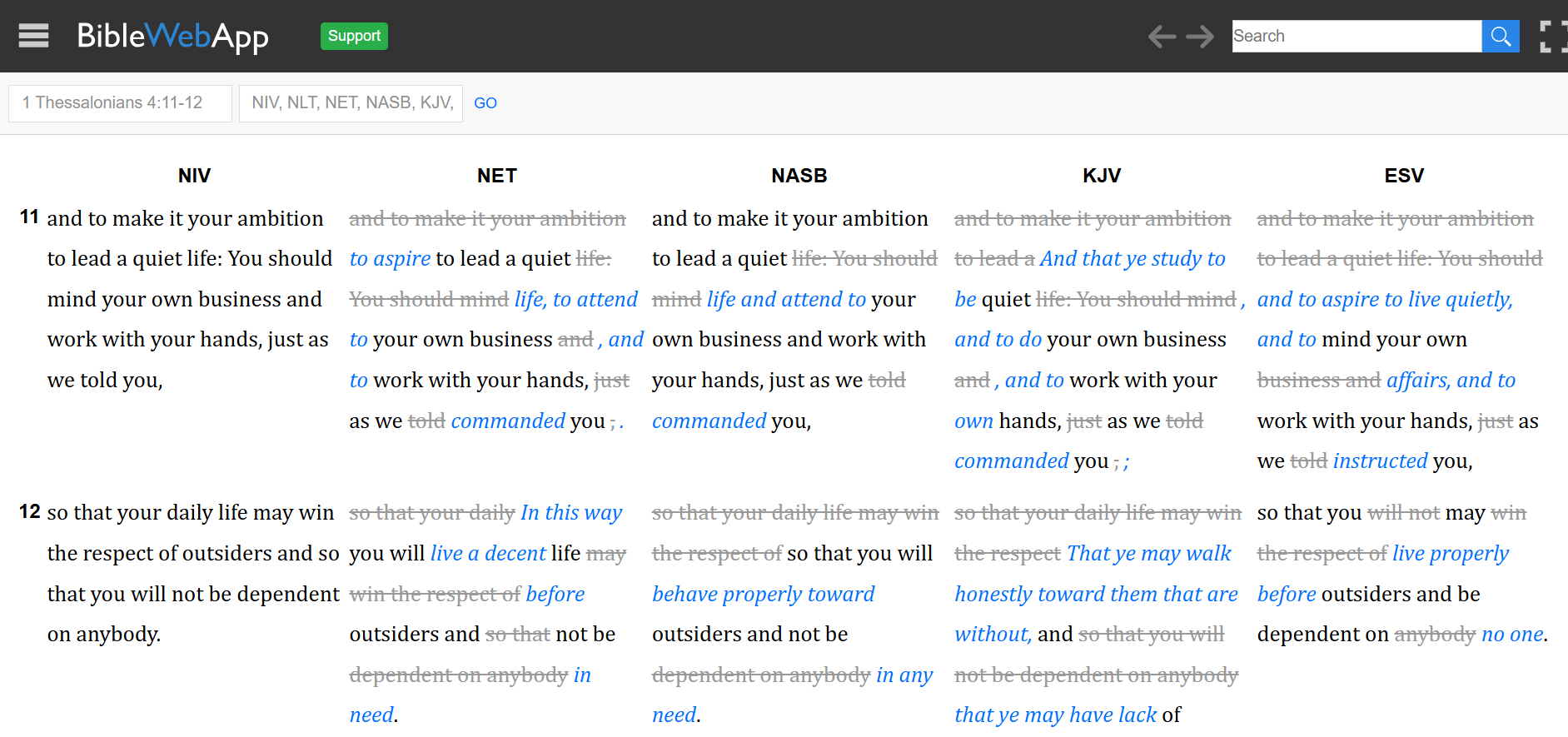
A Growing Digital Bible Study Essential
Currently in its third edition, the Bible Study App has matured into a clean, user-friendly platform for Bible reading and study. Its commentaries include classics like John Wesley’s Notes on the Bible. You can also explore biblical geography through geotagged verses linked to modern maps. You can hover over words and get definitions. Even more, in a comparison view, you can highlight a word and it highlights in the other translations (or manuscript) so that you can see the other words used to explain this original word. I would also say that the fonts are among the clearest I’ve seen, and the layout ensures that every click opens a new panel within your existing screen—helping you stay focused. While it won’t replace in-depth tools like Logos for sermon prep or theological research, it’s a brilliant choice for day-to-day Bible reading, group study, or simply comparing translations in a distraction-free environment.
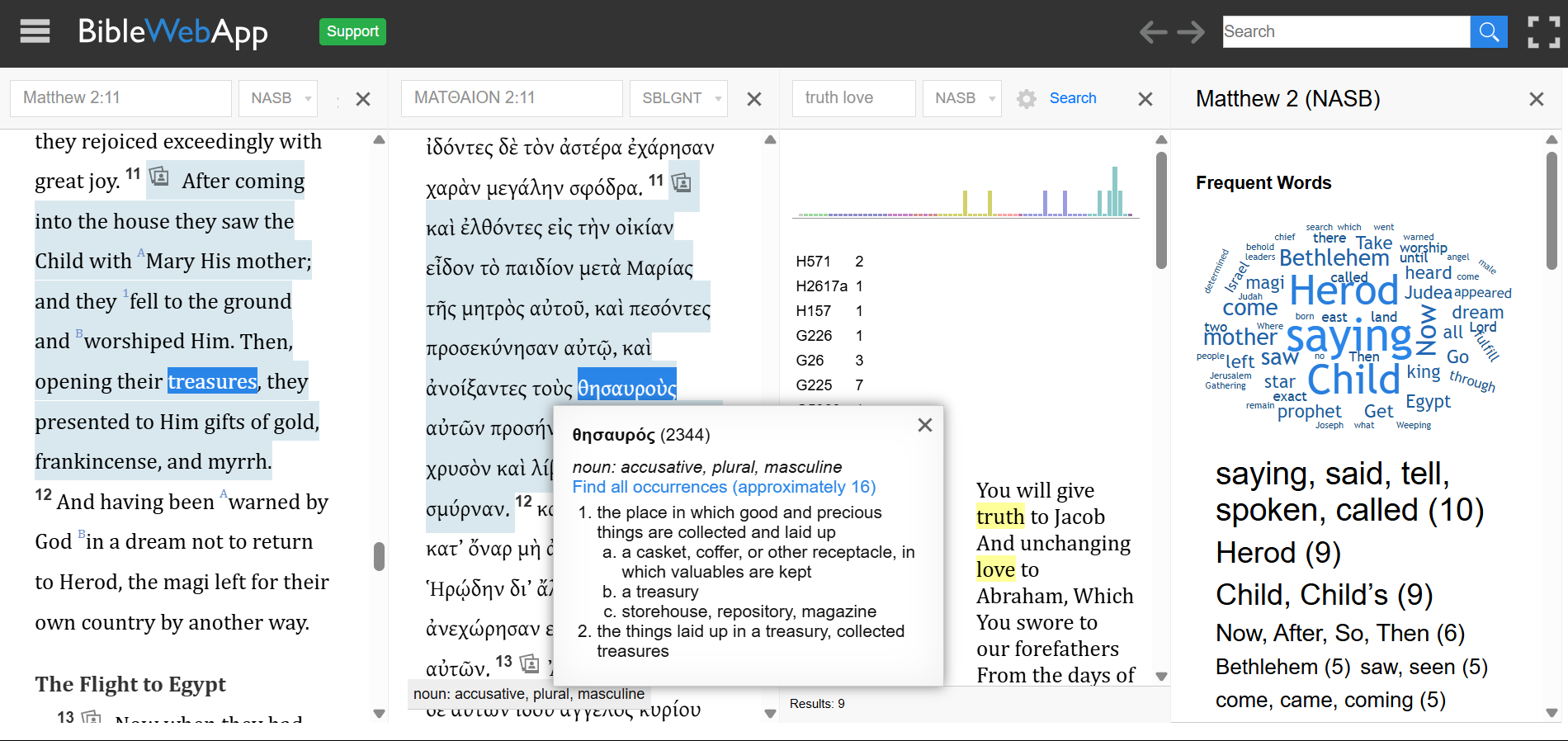
Behind the Bible Study App
Behind this tool is an interesting story and team of people. John Dyer serves as the Vice President for Enrollment and Educational Technology and teaches theological studies at Dallas Theological Seminary. He also has made his living by coding, integrating theological reflection with technological innovation into many of his projects. John’s projects include a mix of bible resources and artificial intelligence websites; bestcommentaries.com, biblewebapp.com, yallversion.com, worship.ai, and biblereadingplangenerator.com. It seems like many of his projects are open source. Even the code for the Bible Study App can be downloaded on Github.
As a side note, one of his most distinctive projects is the YALL Translation of the Bible. This newer bible translation is based on the American Standard Version with punctuation from the World English Bible, the YALL Bible has three points of difference. First, it seeks to restore second-person plural distinctions by translating “you” for singular and “y’all” for plural. Second, it also renders the divine name of God as YHWH, and sets divine pronouns in small caps, such as Hᴇ or ʜɪꜱ. Jesus’ pronouns remain in standard lowercase form. Third, the translation balances a dynamic English readability with a word-for-word approach that draws out patterns in the original Hebrew and Greek. I mention this because I’ve heard of this translation more than I have heard of any of John’s other works, and truthfully I haven’t deeply explored this translation myself, it’s an intriguing project and worth checking out for those interested in how language affects our reading of Scripture. For the most part, it feels like these three aspects are resolved in other translations and this feels like a gimmicky or niche market more than a resource for serious academic study or preaching (the selling of YALL merchandise backs this up), but it does seem to do a good job at reminding readers of the way some words mean to include all.
Michael Johnson, the other major contributor to the Bible Study App, brings a fascinating background as well. A former officer in the U.S. Navy and a graduate of Navy Nuclear Power School, he later transitioned into software engineering. In 1994, feeling led by the Lord, Michael Johnson began translating the Bible into modern English to ensure it could be freely copied in electronic formats with no restrictions. This seems to be his passion, and that passion led him to be involved in the development of the World English Bible and God’s Living Word translations, which seemingly remain in open distribution to this day. The WEB is hosted at Michael Johnson’s site, eBible.org, and has gone through several revisions over the years. Early on, it followed the ASV (like Dyer’s YALL) in transliterating the divine name, using “Yahweh” throughout the Old Testament. Today, this remains only in the Classic version, while other editions now use “LORD.” Again, I do not have much experience with the WEB, but I deeply appreciate this open and accessible approach to Scripture, which places the WEB alongside other public domain or freely licensed translations like the MLV, NET, and OEB.
The World English Bible (WEB) is a freely shared English translation of the Bible by Michael Johnson, designed to remain permanently in the public domain. Rooted in the American Standard Version of 1901, the WEB was created to be a translation that anyone can use, publish, or distribute without restriction. It is available in both American and British English styles and follows a formal equivalence approach to translation. The New Testament is based on the Byzantine Majority Text (Robinson and Pierpont, 1991), while the Old Testament draws from the Biblia Hebraica Stuttgartensia, with some influence from the Septuagint and Dead Sea Scrolls. From what I’ve gathered, the God’s Living Word translation by Michael Paul Johnson appears to focus specifically on translating the writings of John—namely the Gospel of John and the Johannine letters—into modern English. It seems to be a more limited project rooted solely in these texts, and there is relatively little information available about it online.
A Few Drawbacks
There are a few drawbacks, but not many. I do wish there were more commentary options and the ability to save bookmarks. It would also be great to have a copy-and-paste feature that includes automatic footnotes—though that might just be the student in me talking. There are a few additional Bible translations that I wish were available, including the God’s Word Translation from the God’s Word to the Nations Mission Society.
Recommending the Bible Study App
This Bible Study Essentials series would not be complete without some point highlighting the Bible Study App as a truly accessible, effective, and free tool that has helped to deepen my engagement with Scripture and has become a trusted companion in my study, sermon preparation, and spiritual formation along the way.
The Bible Study App is a free resource that can become essential in helping us to seek a quieter, more intentional life of faith—one marked by stillness and the deep knowing that God is God. Through this series, I am hoping that you’ll discover resources that help you study and grow as a follower of Jesus, too. This incredibly practical resource, the Bible Study App, might just be one of those.
If you’re seeking a digital tool that helps you lead a quieter, Scripture-rooted life—without the noise, without the ads, and without logins—this app is worth your time. It’s a refreshing reminder that sometimes the best tools are the ones that simply do what they’re designed to do—and do it well.
You can check it out at biblewebapp.com. This app and the growing ecosystem of Bible study tools it is connected to, is helping churches, individuals, and communities all around the world.
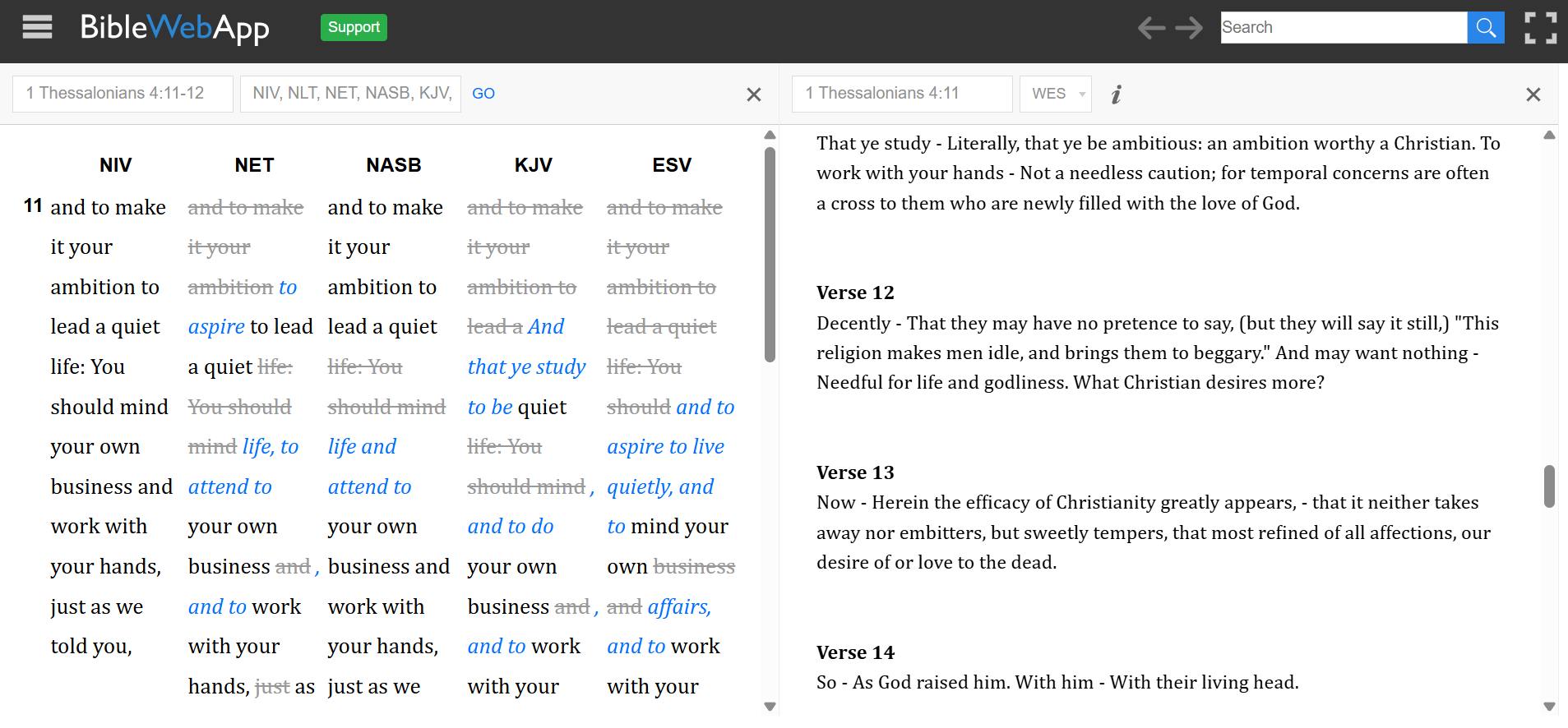
Closing Thoughts
I’m always interested in a good conversation or a cup of coffee. Feel welcome to reach out to me via email —I’d love to hear from you. You can connect with me through Facebook, Instagram, Bluesky, X, LinkedIn, Threads, and/or YouTube.







